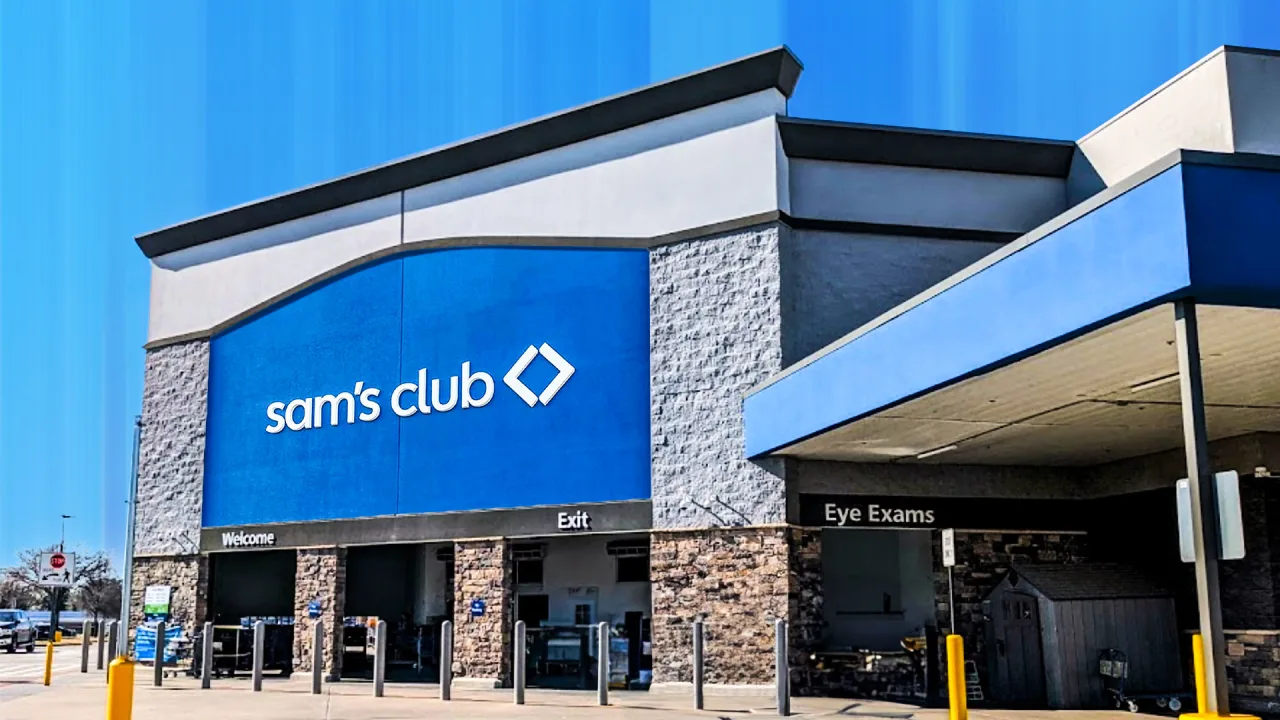Sam’s Club is raising minimum wages and says workers will get faster raises with this new model
Uncle Sam wants you . . . to get a raise. Sam’s Club announced on Tuesday that it is revamping its workforce compensation model to one that accelerates pay increases for associates, increases the hourly minimums that workers earn, and allows some workers to earn bonuses. Sam’s Club, which is owned by Walmart, raised its minimum wage to $15 per hour in September 2021, and it will now boost that to $16, with workers in some locations earning more. The changes take effect in early November. All told, Sam’s Club says the new model “accelerates pay for nearly 100,000 frontline associates and provides a roadmap for them to plan and pursue more predictable, longer-term financial futures.” How the compensation model is different To get more granular, the company’s new model includes a plan to accelerate hourly wage growth, with wages growing between 3% and 6% annually, depending on a worker’s duration with the company. That means associates will reach the maximum pay rate for their given position quicker than before. So, if an associate’s pay range was between $15 and $22 per hour, they’d reach the $22 per hour level faster under the new plan, whereas it may have taken years longer under the old model. Further, Sam’s Club expects hourly rates for associates to clock in at more than $19 per hour, with bonuses available, too. Currently, data from Payscale shows that Sam’s Club’s average hourly rate is slightly more than $16. “At Sam’s Club, we believe delivering an unparalleled experience for our members starts with investing in our frontline associates,” said Chris Nicholas, president and CEO of Sam’s Club, in a press release shared with Fast Company. “Until now, retail compensation has largely been about hourly wages, and it’s almost unheard of to talk about frontline associate compensation in terms of a predictable financial future—that changes for Sam’s Club starting today,” he continued. “Our new approach is one step in a series of investments we’ve made in our people over the last several years, all designed to provide more meaningful jobs and build successful teams.” How retail wages measure up Overall, the average retail worker (of all stripes) earns almost $25 per hour, according to data from the St. Louis Fed. So, Sam’s Club’s new model helps get its massive workforce closer to that figure. And with workers in some states—notably, fast food workers in California—earning at least $20 per hour, the model may help the retailer better compete for talent. As for what it means for consumers who may be worried that the costs will be handed down to them in the form of price increases, it’s difficult to say. There is evidence that minimum wage increases are tied to higher prices—but not by much. So, it may be a wash: More money gets into associates’ pockets, with modest possible price increases. The company’s “strategic investments in employees and their work have already fueled productivity, increased sales, and built record membership rates,” said Zeynep Ton, professor of the practice in the Operations Management Group at MIT Sloan School of Management and cofounder and president of The Good Jobs Institute, in comments included in Sam’s Club’s release. “Now, they are continuing to enhance the retail experience for both employees and customers.”

Uncle Sam wants you . . . to get a raise.
Sam’s Club announced on Tuesday that it is revamping its workforce compensation model to one that accelerates pay increases for associates, increases the hourly minimums that workers earn, and allows some workers to earn bonuses.
Sam’s Club, which is owned by Walmart, raised its minimum wage to $15 per hour in September 2021, and it will now boost that to $16, with workers in some locations earning more. The changes take effect in early November.
All told, Sam’s Club says the new model “accelerates pay for nearly 100,000 frontline associates and provides a roadmap for them to plan and pursue more predictable, longer-term financial futures.”
How the compensation model is different
To get more granular, the company’s new model includes a plan to accelerate hourly wage growth, with wages growing between 3% and 6% annually, depending on a worker’s duration with the company.
That means associates will reach the maximum pay rate for their given position quicker than before. So, if an associate’s pay range was between $15 and $22 per hour, they’d reach the $22 per hour level faster under the new plan, whereas it may have taken years longer under the old model.
Further, Sam’s Club expects hourly rates for associates to clock in at more than $19 per hour, with bonuses available, too. Currently, data from Payscale shows that Sam’s Club’s average hourly rate is slightly more than $16.
“At Sam’s Club, we believe delivering an unparalleled experience for our members starts with investing in our frontline associates,” said Chris Nicholas, president and CEO of Sam’s Club, in a press release shared with Fast Company.
“Until now, retail compensation has largely been about hourly wages, and it’s almost unheard of to talk about frontline associate compensation in terms of a predictable financial future—that changes for Sam’s Club starting today,” he continued. “Our new approach is one step in a series of investments we’ve made in our people over the last several years, all designed to provide more meaningful jobs and build successful teams.”
How retail wages measure up
Overall, the average retail worker (of all stripes) earns almost $25 per hour, according to data from the St. Louis Fed. So, Sam’s Club’s new model helps get its massive workforce closer to that figure. And with workers in some states—notably, fast food workers in California—earning at least $20 per hour, the model may help the retailer better compete for talent.
As for what it means for consumers who may be worried that the costs will be handed down to them in the form of price increases, it’s difficult to say. There is evidence that minimum wage increases are tied to higher prices—but not by much. So, it may be a wash: More money gets into associates’ pockets, with modest possible price increases.
The company’s “strategic investments in employees and their work have already fueled productivity, increased sales, and built record membership rates,” said Zeynep Ton, professor of the practice in the Operations Management Group at MIT Sloan School of Management and cofounder and president of The Good Jobs Institute, in comments included in Sam’s Club’s release. “Now, they are continuing to enhance the retail experience for both employees and customers.”






















